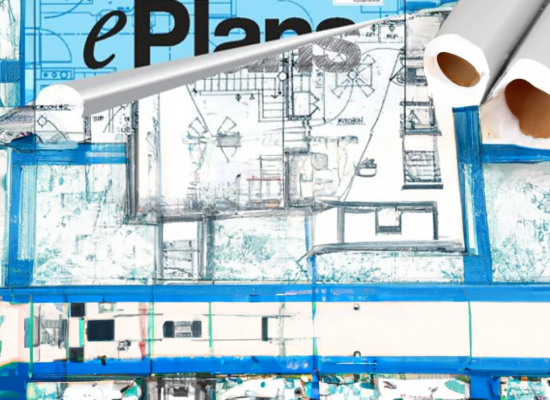Overview of AIA Contract Documents
AIA Contract Documents are a set of important forms and agreements that are used in the construction industry. These documents are made by the American Institute of Architects (AIA) and are used by architects, builders, and contractors all over the United States. They provide a standard format for construction projects and include important forms like the Request for Information (RFI) form, the Basic Services form, the Construction Changes Directive form, the Change Order form, the Architect’s Supplemental Instructions form, and the Architect’s Field Report form.
These forms are used throughout the construction process to help make sure that everyone involved in the project is on the same page. For example, the RFI form is used when the contractor or subcontractor has a question or needs more information about a specific aspect of the construction project. The Basic Services form is used to outline the services that the architect will provide during the construction process. And the Change Order form is used to document any changes that are made to the project after the contract has been signed.
In addition to these forms, there are other terms and concepts that are associated with the AIA Contract Documents. These include Performance Mockup (PMU), Life Cycle Cost Analysis (LCCA), Electrical Power Commissioning Plan, Engineering Assessments, LEED Transit Form, and Architect’s Handbook of Professional Practice. These concepts, forms, and other sources are important to understand for anyone who works in the construction industry.
Overall, AIA Contract Documents are a set of important forms and agreements that are used in the construction industry to make sure that everyone involved in a construction project is on the same page and that the project is completed successfully. These documents are widely recognized and accepted in the industry as standard forms for construction projects and are an important resource for architects, builders, and contractors.
Understanding The Standard Forms for Construction Projects
The American Institute of Architects (AIA) is a professional organization that represents architects in the United States. AIA Contract Documents are a set of forms and agreements that are commonly used in the construction industry. These documents are created and published by the AIA and are widely recognized and accepted in the industry as standard forms for construction projects. In this post, we will take a closer look at the AIA Contract Documents and understand the key forms and agreements that are included in them.
Key Forms and Agreements in AIA Contract Documents
The AIA Contract Documents include a variety of forms that are used throughout the construction process. Some of the most commonly used forms include the following,
- Request for Information (RFI) form (AIA G716)
- Basic Services form (AIA B101)
- Construction Changes Directive form (AIA G714)
- Change Order form (AIA G701), the Architect’s Supplemental Instructions form (AIA G710), and the
- Architect’s Field Report form (AIA G711).
The RFI form (AIA G716) is used to request clarification or additional information from the architect during the construction process. This form is typically used when the contractor or subcontractor has a question or needs more information about a specific aspect of the construction project.
The Basic Services form (AIA B101) outlines the basic services that the architect will provide during the construction process. This includes services such as design, construction drawings, and construction supervision.
The Construction Changes Directive form (AIA G714) is used to document changes to the construction project that occur during the construction process. This form is typically used to document changes that are made to the project after the contract has been signed.
The Change Order form (AIA G701) is used to document changes to the construction project that occur after the contract has been signed. This form is typically used to document changes that are made to the project after the contract has been signed.
The Architect’s Supplemental Instructions form (AIA G710) is used to document additional instructions or clarification provided by the architect to the contractor during the construction process. This form is typically used when the contractor or subcontractor needs more information about a specific aspect of the construction project.
The Architect’s Field Report form (AIA G711) is used to document the architect’s observations and inspections of the construction site. This form is typically used to document the architect’s observations and inspections of the construction site.
Additional Terms and Concepts in AIA Contract Documents
In addition to the forms and agreements outlined above, there are a number of other terms and concepts that are associated with the AIA Contract Documents. Here are a few to get familiar with,
- Performance Mockup (PMU)
- Life Cycle Cost Analysis (LCCA)
- Electrical Power Commissioning Plan
- Engineering Assessments
- LEED Transit Form, and the
- Architect’s Handbook of Professional Practice.
Performance Mockup (PMU) is used to validate the design, check the structural integrity, and test for water penetration. PMUs are typically conducted on a small scale before construction begins to ensure that the design and materials will work as intended.
Life Cycle Cost Analysis (LCCA) is a method of evaluating the total cost of ownership of a building over its entire life span. This includes the cost of design, construction, operation, maintenance, and eventual demolition of the building.
Electrical Power Commissioning Plan is a document that outlines the process and procedures for commissioning the electrical power system of a building. This includes testing, inspection, and verification of the electrical power system to ensure that it meets the design specifications and is safe for operation.
Engineering Assessments are evaluations of the structural, mechanical, electrical, and plumbing systems of a building. These assessments are typically conducted to identify any issues or problems that may affect the performance and longevity of the building.
LEED Transit Form is a tool used to evaluate the sustainability of a building’s design and construction. LEED (Leadership in Energy and Environmental Design) is a rating system that is widely used to evaluate the environmental performance of buildings.
Architect’s Handbook of Professional Practice is a guidebook that provides architects with information on professional practice, including ethical standards, business practices, and legal requirements. This guidebook is an important resource for architects as it covers many of the practical and legal aspects of the profession.
The AIA Contract Documents also include the General Conditions of the Contract for Construction (AIA A201). This document outlines the responsibilities of the owner, architect, and contractor during the construction process. It includes information about project management, payment, and dispute resolution.
In conclusion, AIA Contract Documents are a set of forms and agreements that are widely used in the construction industry. These documents provide a standard format for construction projects and include key forms such as these,
- RFI
- Basic Services
- Construction Changes Directive
- Change Order
- Architect’s Supplemental Instructions, and
- Architect’s Field Report forms.
In addition, AIA Contract Documents also include additional terms and concepts such as,
- Performance Mockup
- Life Cycle Cost Analysis
- Electrical Power Commissioning Plan
- Engineering Assessments
- LEED Transit Form and
- Architect’s Handbook of Professional Practice
All of which are important to understand for anyone who works in the construction industry.
 Copyright secured by Digiprove
Copyright secured by Digiprove 



